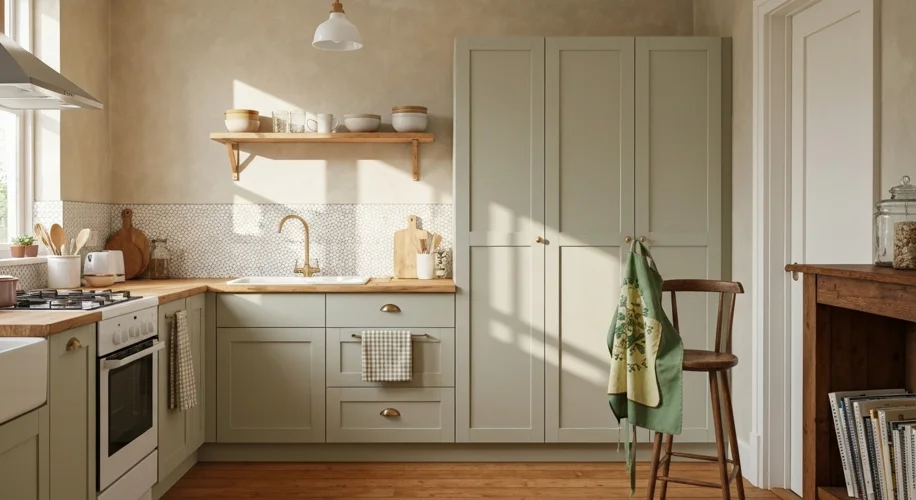As anyone who’s renovated an older home knows, “straight” and “level” can sometimes be more like polite suggestions than actual architectural features. My own gardening journey has taught me a lot about working with nature’s imperfections – a gnarled tree branch here, a slightly sloping patch of earth there. You learn to adapt, to see the unique character in what isn’t perfectly uniform. Kitchen cabinetry in older homes presents a similar challenge, especially when those walls seem to have a mind of their own.
It’s a common hurdle. You’ve picked out beautiful cabinets, you’re ready for that kitchen glow-up, and then you start to install them. Suddenly, you’re staring at a gap you didn’t expect, or a cabinet door that doesn’t quite sit flush. Before you start tearing your hair out, remember this: you can achieve a beautiful, functional kitchen even with imperfect walls.
One of the first things to do is to understand how wonky your walls are. Use a long level and a measuring tape to check the walls where your cabinets will go. Are they bowing out or curving in? Are they consistently off-level? Knowing the extent of the issue will help you plan your approach.
When installing base cabinets, shimming is your best friend. You can use thin strips of wood (shims) behind the cabinet to bring its face forward and make it appear level with the wall, even if the wall itself isn’t. You can also use shims between cabinets if they need to be adjusted slightly to meet each other. It’s all about creating a visual plane that looks consistent.
For upper cabinets, the same principles apply. You might need to shim the mounting brackets behind the cabinet to compensate for wall irregularities. The key is to ensure the cabinet is securely fastened to the wall studs, while also making sure its front face is as plumb and level as possible relative to its neighbors.
Don’t forget about the corner cabinets. These can be particularly tricky. Sometimes, you might need to scribe the edge of a cabinet door or a filler piece to match the contour of a bowed wall. Scribing involves carefully shaving away a small amount of material from the edge of a piece of wood so it fits snugly against an uneven surface. It’s a bit like pruning a plant to encourage growth in a specific direction – it requires patience and a gentle touch.
Consider using filler strips. These are narrow pieces of wood that can be installed between cabinets or between a cabinet and a wall to fill in any unsightly gaps. They can be cut and shaped to conform to the wall’s irregularities, providing a much cleaner look than a visible void.
And let’s talk about doors and drawer fronts. If your cabinet boxes are mostly straight but the doors have a slight warp or the walls aren’t perfectly plumb, you might notice hinges that don’t look quite right. Adjustable cabinet hinges are a lifesaver here. You can often tweak them to make doors hang straighter and closer together, visually hiding some of the wall’s quirks.
Working with older homes is about embracing their history and character. Those slightly imperfect walls are part of the story. With a little planning, the right tools, and a willingness to adapt – much like coaxing a stubborn vine to climb a trellis – you can create a kitchen that is both beautiful and functional, a true harmony of old and new.

